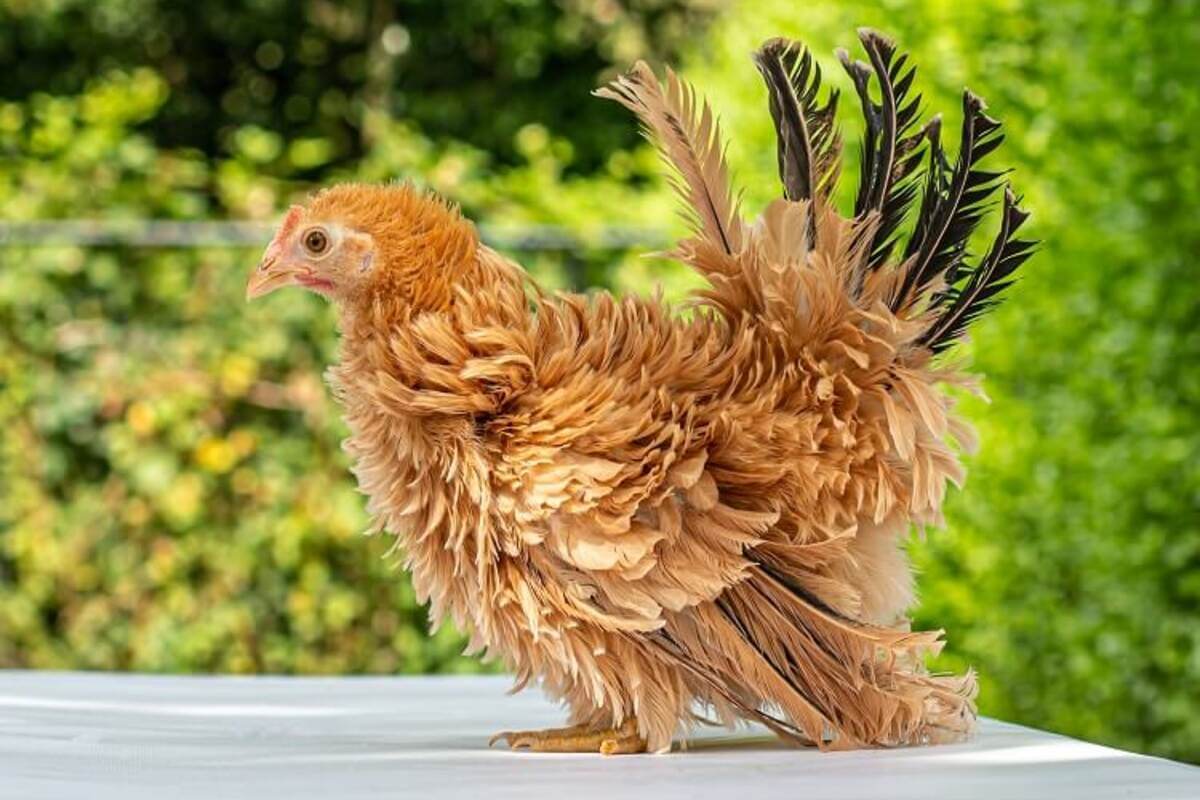How many roosting bars do you need, how high off the ground should your roosting bars be and how wide should they be? Here's everything you need to know about chicken roosting bars.
At the end of a long day, nothing feels better than crawling into bed, pulling the covers up, and getting a great night's sleep. Chickens love sleep too, they just do it a little differently.
Instead of crawling into bed they jump up on a roosting bar and they roost.
Roosting not only helps them to relax, but it also keeps them safe from predators that may come out at night. This is why having a good roosting bar is an essential part of ensuring your backyard chickens are healthy and happy.
Chickens take their pecking order very seriously and those highest in the pecking order will grab the highest perch, leaving the lower (and more vulnerable) spots to those lower in the flock order.
Sleeping on the ground or the coop floor also leaves them more susceptible to pathogens, bacteria, and external parasites such as mites and lice, so you want your hens to perch on chicken roosts at night. Dust baths for chickens are also a way that hens ward off chicken mites and other pests.
What Exactly Is a Chicken Roosting Bar?
A chicken roosting bar is simply a raised platform where chickens perch to sleep.
It’s an essential item that should definitely be on your “what should be inside my chicken coop” checklist.
Roosting bars come in many designs and sizes. Some are made from wood, PVC, aluminum, or metal. They can be attached to the walls or suspended, depending on your chicken coop design.
Roosting bars not only provide a place for chickens to sleep, but they also protect the eggs from being crushed. Therefore, it’s important to make sure you have the right roosting bar for your flock size.
Material and Size of Roosting Bar
The material of the roosting bar is very important. Make sure it is made from a durable material so that it can withstand the wear and tear it will take over time.
Wood is a fantastic material but you could use a composite as well.
Unlike other birds, chickens prefer to sit flat-footed or close to it so make sure not to have too thin of a roosting bar.
If you use a 2x4 put the 4" side up and you could even round the edges for the comfort of the birds with a router.
Avoid metal as it is slippery and in the winter it can get too cold and cause your flock to have frostbitten feet. PVC can also be too slippery so make sure the birds can get a grip.
Wrapping your roosting bars in rope can create a more natural feel for chickens, just like when they roosted before the time of chicken coops. Veterinarians recommend this as well for the prevention and treatment of bumblefoot because it allows for airflow underneath your bird's feet.
Location in the Coop
Chickens poop while they sleep so the location of the roosting bars is very important. You'll want to make sure they are placed so the chicken excrement lands in your poop tray or somewhere it's easy to clean.
Please make sure feeders, waterers, and nesting boxes are not below the roosting bars. Certain areas can be more drafty, have too much airflow or not enough, and even cause stress for your flock.
Place the roosting bar close enough to the walls that it blocks out most of the drafts but also make sure there is ample ventilation so your birds don't overheat during those summer months.
The perches should be slightly above head height to allow the chickens to feel secure from potential predators.
Make sure that none of them overlap when they are all sitting down and leave plenty of room between each one as well.
Lastly, make sure you place a few extra bars depending on how large your flock size is so everyone has their own roosting space on their own perch.
What Is the Ideal Height for a Chicken Roosting Bar?
The ideal height for a chicken roosting bar is at least 1 foot from the ground and 6 inches from the wall.
If you're going to make the roost much higher than two feet, staggering several roosting bars like stairs at varying heights will make it easier for chickens to get up and down. This will reduce potential injuries.
Bumblefoot, which is a staph infection of the foot and leg is often caused by hard landings off of roosting bars.
You should also consider the breed of your chickens because some prefer to roost higher than others. In general, lighter breeds tend to perch longer and on higher roosts than heavier breeds.
| PRO TIP: If you're raising chickens for eggs it's super important that your roosting bars are higher than your nesting boxes, otherwise your hens will want to roost in your nesting boxes and will get them really dirty and potentially crush your eggs. |
How Wide Do My Roosting Bars Need to Be?
Chicken roosting bars should be at least 2 inches wide and preferably 4 inches wide.
Chickens don’t wrap their feet around a perch like wild birds do. They actually prefer to sleep flat-footed. This has the added benefit of keeping their feet protected from frostbite in the winter from below using the roost as protection and using their body as protection from above.
This also protects their feet from mice or rats who will often nibble on chicken toes while they are sleeping.
How Long Should My Roosting Bars Be?
It really depends on the size of your chickens, but allowing for 8 inches per hen is usually a safe bet.
More is better but you'll find in the winter that your birds are all snuggled together for warmth. If you're in a cold climate you may need a chicken coop heater.
Interestingly enough, they also use each other for balance so they will always be roosting together in a row and usually, they'll be squished together as that's the way they like it. The only exception is during the summer they will spread out and appreciate some extra room.
| PRO TIP: If you find your eggs are freezing before you can get to them in the nesting boxes of your coop, consider using a radiant-type chicken coop heater mounted under the nesting boxes. |
How Many Roosting Bars Do I Need?
You should provide enough space for all your chickens to perch comfortably.
For standard-sized chickens, you should provide at least 8 inches of perch space per bird but please note that the roosting chickens will cram together so less can be required.
If you have larger breeds, you might want to consider wider roosting bars. The bars should also be evenly spaced so that each chicken has enough room.
How Do I Keep the Roosting Bars Clean?
It’s important to keep the roosting bars clean to prevent the buildup of dirt, waste, and parasites.
Use a garden hose to wash the bars regularly.
You can also use a scrub brush to get rid of stubborn waste and debris or a paint scraper if your roosting bars work with that.
You can use a white vinegar/water mixture or an orange peel vinegar cleaner to help get the waste off the bars. Using a vinyl shelf liner on the coop walls behind the roosting bars can also help make cleanup easier.
Always make sure the roosting bars are dry before chickens roost at night. If you notice any signs of parasites or mites, treat your coop and roosting bars immediately to prevent infestation.
Can I Build My Own Roosting Bars?
Absolutely! Building your own roosting bars can be fun and easy. You can use materials like wood to create your own unique designs.
Just make sure you have the right measurements, and the bars are sturdy enough to hold your chickens’ weight.
There are many DIY projects and tutorials online that can help guide you in building your own roosting bars.
Final Thoughts on Perfecting Your Chicken Roosting Bar Setup
In summary, chicken roosting bars are essential for any backyard chicken coop. They provide a safe and comfortable place for chickens to sleep and they also protect eggs from being crushed.
When building or choosing roosting bars, make sure to account for the size and breed of your chickens and that they are at the right height and evenly spaced.
Regular cleaning of the roosting bars is also important to prevent the buildup of waste, dirt, and parasites.
Now that you know everything there is to know about chicken roosting bars, your flock can sleep soundly, and you can have peace of mind knowing that they are safe and happy.







